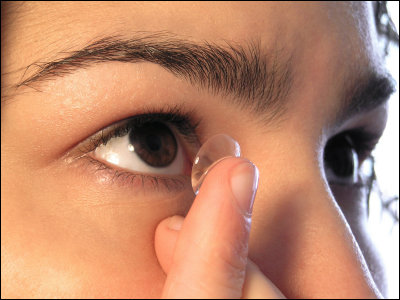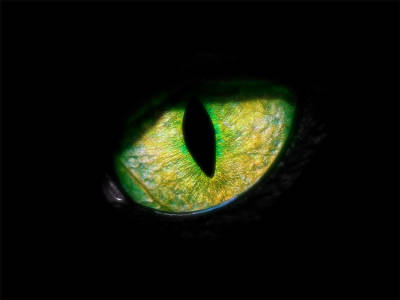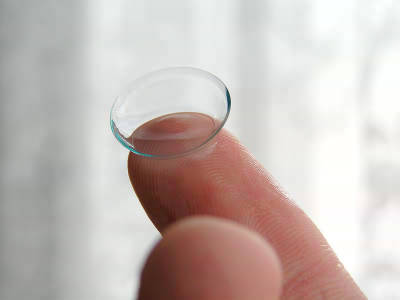What is the history and future direction of "contact lens" developed for higher comfort?

ByPablo Fernandez
In the 1880s, the first hard contact lenses were born, and in the 1970s about 100 years later, soft contact lenses using new materials were born. Contact lenses that can eliminate the annoyance of wearing glasses are items that are very useful for those who suffer from vision problems and contact lenses that directly touch the eyeball have been a series of technological innovations to enhance comfort during wearing.
Making better contact lenses | March 27, 2017 Issue - Vol. 95 Issue 13 | Chemical & Engineering News
http://cen.acs.org/articles/95/i13/Making-better-contact-lenses.html
Even in the world, the proportion of those who have sufficiently secured the vision of the naked eye has decreased, and in particular the trend is known to be prominent in the Asian region. People with myopia are increasing among young people in Japan, and the proportion of elementary school students whose unaided vision is less than 1.0 is30.9%Has been reached. Furthermore, it is proved that in Japan, which is the neighbor country of Korea, 90% of the generation entering university enters problems with sight.

It is correction of vision by glasses, contact lenses, and Lasik which has been widespread in recent years that people who have problems of vision like this should rely on. In recent years, the evolution of soft type contact lenses (soft lenses) has advanced, and statistics have also been revealed in the United States that approximately 90% of the contact lens market is occupied by soft lenses.

In the US, 54% of women and 46% of men have statistic that they have symptoms of myopia. Also, among those who are using soft lenses, 31% say that they use one-day disposable ones. However, 30 to 50% of contact lens users have problems with comfort during wearing and are consulted by a doctor. Furthermore, it is also clear that the result that 20% of the total stops using itself.

In response to such a situation, contact lens manufacturers have continued to improve comfort with the review of materials and new technologies. The initial soft lens used "Hydrogel" based on hydroxyethyl methacrylate (HEMA), a polymer material with moisture content inside. This material had the characteristic that it was very soft and fitted well, but due to the characteristic that it is impermeable to oxygen (low permeability of air), the oxygen supply to the eyeball was solely dissolved in tears I had to rely on oxygen.
After that, oxygen permeable soft lenses have also been developed, but the difference was clearly more evident than the type of harder lenses that pass more oxygen. Therefore, some people who always wear soft lenses have symptoms that the red eye portion turns red due to lack of oxygen supply to the eyeballs. There are no blood vessels in the eyeball, and the supply of oxygen depends on the outside air. However, when the supply of oxygen by the contact lens becomes stagnant, blood flow is generated due to feeding blood into the eyeball, and as a result, the white eye portion turns red. According to Steve Diamantei, a researcher of the contact lens maker "CooperVision", if the condition of insufficient oxygen to the eyeball continues and falls into a critical situation, the symptoms of "cornea edema" where the eyeball is distorted and the visibility is distorted It leads to.
In the late 1990s, as a new material to solve such defects, polymers containing silicon "Silicone hydrogel"Has appeared. The silicone hydrogel, which has about 6 times the oxygen permeability compared with conventional hydrogels, has greatly improved the problem of oxygen supply to the eyeball, but there is a big development problem was doing. Silicon itself has high oxygen permeability, but because it has hydrophobicity on its own, it has characteristics that it is easy to dry even when combined with a highly hydrophilic hydrogel. Therefore, there was a disadvantage that the eyes became easier to dry.
Also, since silicon captures lipids contained in tears, there was a problem that the material deteriorated. John Puluit of contact lens maker Alcon says that developing contact lenses using silicone hydrogel was "removing the harmful effect while securing oxygen permeability was the biggest challenge."
In order to solve this problem, a technique to increase the water retentivity by applying a coating with the thickness of hundreds of atoms by plasma on the surface of the lens was developed, but it is weak against external forces and cracks immediately There was that. Therefore, Alcon developed technology that maximizes the characteristics of both materials using nanotechnology. In this lens, a technique of preventing the drying by increasing the silicon content rate in the center portion of the lens to increase the permeation amount of oxygen while forming channels (thin stripes) of the hydrophilic high hydrogel in the surrounding portion Had been used.

In one CooperVision, in order to realize a lens that is softer and wearing comfortably, we have been developing with focusing on lenses having the same composition as a whole. And the conclusion that the company reached was "development of material with new molecular structure". Diamantei said, "We developed a technology to bond hydrophilic substances and reverse silicone materials at the molecular level, and as a result, we acquired new materials" as it is easy to contain moisture as much as possible " It seems to have become.
As a result, the soft lenses using these materials in 2013 will make a dramatic progress with silicone hydrogel soft lenses. Soft lenses with a high moisture holding ratio of 80% higher than in the past were highly appreciated, and the rate at which users accept lenses without problems has risen from about 60% to 80 to 90%.
Moreover, this benefit is also spread to contact lens users. Washington DC optometrist Doctor Stephen S. Grasser said that in a modern society where many people gazed at the computer screen from morning till evening and the number of blinks is decreasing, these lenses have good impact on people We are talking about bringing it. However, it seems to emphasize on the other hand that "not to wear a lens" is the best way.
So far, contact lenses have been given the role of "correction of vision", but in the future we are expected to play a role as "information terminal" in addition to this. In 2014, Alcon, a constraint and biotechnology company "Novartis" affiliated company, from GoogleLicensing of patent of "smart lens" technologyWe are announcing that they will undertake joint development. According to a passage, it is said that this attempt is a difficult one, but if the smart lens becomes a reality, information necessary for part of sight is displayed at any time, take a look at a smartphone or other device It may be unnecessary days to come. In addition, it is thought that it will be possible to grasp health condition by monitoring blood flow.
Furthermore, the contact lens itself becomes a camera, the movie "Mission: Impossible / Rogue NationTechniques that appeared in "The idea was also invented.
Sony's patent application for camera built-in contact lenses, adjust aperture by blinking, operate auto focus, shutter - GIGAZINE

A very spy utility patent for "Small Contact Lens with Built-in Mini Camera" is applied - GIGAZINE
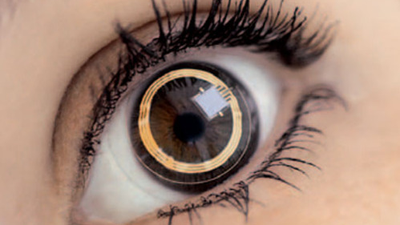
In addition, although this is slightly different from "Smart Lens", prototypes of "Telephoto Contact Lens" that can switch the field of view to 2.8 times the standard by incorporating a polarizing lens are also released.
Telephoto contact lens that can switch between equal magnification and 2.8 times by blinking appears - GIGAZINE
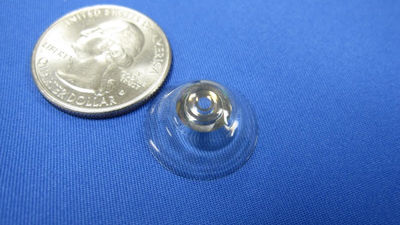
Related Posts:
